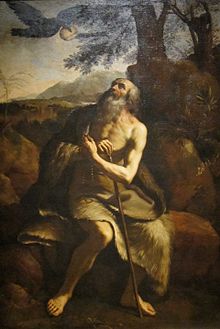
Back رهبانية مسيحية Arabic Xristian rahibliyi Azerbaijani Monaquisme cristià Catalan Křesťanské mnišství Czech Kloster (kristendom) Danish Χριστιανικός μοναχισμός Greek Monacato cristiano Spanish رهبانیت مسیحی Persian Kristillinen munkkilaisuus Finnish Monachisme chrétien French
| Part of a series on |
| Christian mysticism |
|---|
 |

Christian monasticism is a religious way of life of Christians who live ascetic and typically cloistered lives that are dedicated to Christian worship. It began to develop early in the history of the Christian Church, modeled upon scriptural examples and ideals, including those in the Old Testament. It has come to be regulated by religious rules (e. g., the Rule of Saint Augustine, Anthony the Great, St Pachomius, the Rule of St Basil, the Rule of St Benedict) and, in modern times, the Canon law of the respective Christian denominations that have forms of monastic living. Those living the monastic life are known by the generic terms monks (men) and nuns (women). The word monk originated from the Greek μοναχός (monachos, 'monk'), itself from μόνος (monos) meaning 'alone'.[1][2]
Christian monks did not live in monasteries at first; rather, they began by living alone as solitaries, as the word monos might suggest. As more people took on the lives of monks, living alone in the wilderness, they started to come together and model themselves after the original monks nearby. Quickly, the monks formed communities to further their ability to observe an ascetic life.[3] According to Christianity historian Robert Louis Wilken, "By creating an alternate social structure within the Church they laid the foundations for one of the most enduring Christian institutions..."[4] Monastics generally dwell in a monastery, whether they live there in a community (cenobites), or in seclusion (recluses).
- ^ Harper, Douglas. "monk". Online Etymology Dictionary.
- ^ Corbishley, Mike. Monks lived a very strict and regulated life. Life in a monastery included prayer, manual work, and this promoted the idea of the dignity and labour. Cultural Atlas for Young People The Middle Ages Revised Edition. New York: Facts On File, Inc., 2004, page 38.
- ^ Rowling, Marjorie. Everyday Life in Medieval Times. London: Jarrold and Sons Ltd, 1968, page 125.
- ^ Wilken, Robert Louis (27 November 2012). The First Thousand Years: A Global History of Christianity. New Haven and London: Yale University Press. p. 100. ISBN 978-0-300-11884-1.